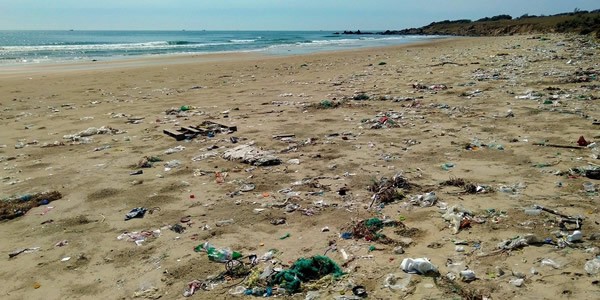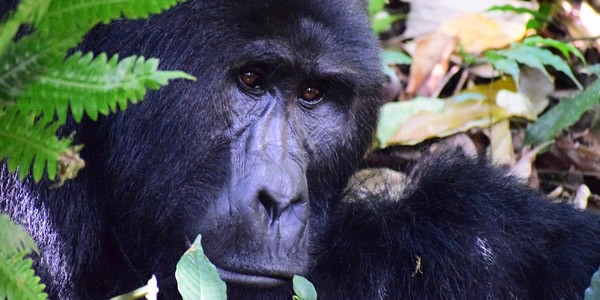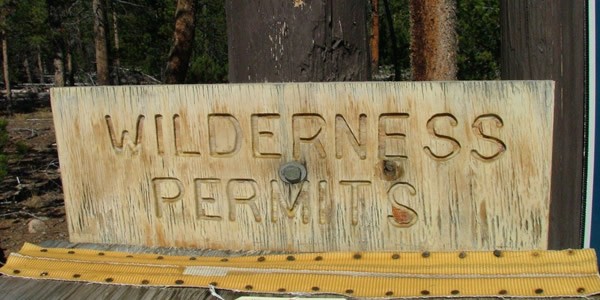Are you curious about how travel can actually help our planet? At SIXT.VN, we believe tourism can be a force for good. This article explores the ways tourism can positively impact the environment, from funding conservation projects to raising environmental awareness. Discover how sustainable travel protects ecosystems and benefits local communities. Learn how you can contribute to responsible travel and environmental preservation on your next adventure in Vietnam!
1. How Does Sustainable Tourism Benefit the Environment?
Sustainable tourism is a game-changer, ensuring tourism benefits local ecosystems and communities without depleting resources. It’s about minimizing damage and actively creating positive environmental outcomes, turning tourism into a powerful force for good. Sustainable travel protects biodiversity, limits natural resource consumption, and maintains vital ecological processes, all while providing enriching experiences for visitors.
1.1 Why is Sustainable Tourism Important?
Tourism significantly impacts a country’s environment, culture, and socio-economic development. This makes sustainable practices essential. The World Tourism Organization (UNWTO) emphasizes that sustainable tourism should use resources within acceptable limits, protect biodiversity, and ensure ecological processes can take place while providing enjoyable experiences for tourists [1].
Remember the over-tourism in places like Venice or Bali? It pushed fragile ecosystems and local communities to their breaking points. Sustainable tourism raises awareness about unique natural features and educates visitors on sustainable management, fostering respect for the environment and cultural differences.
According to the UNWTO, tourism contributes directly or indirectly to all 17 Sustainable Development Goals (SDGs) defined to ensure a safer future for our planet by 2030. Since 2018, UNWTO has operated an online platform dedicated to achieving SDGs through tourism: https://tourism4sdgs.org/. This platform details each sustainable development goal in relation to tourism, addressing areas from biodiversity to sustainable production and consumption.
Working with local businesses and tour operators, sustainable tourism practices lead to a cleaner future for destinations worldwide.
SIXT.VN is committed to promoting sustainable tourism options, ensuring your travels contribute positively to Vietnam’s environment and communities.
2. How Can Tourism Provide Economic Incentives for Conservation?
Tourism is not just about paying for an experience; it’s an investment in the environment’s long-term health. Revenue from tourism can fund wildlife protection, ecosystem restoration projects, and biodiversity hotspot maintenance.
2.1 How Does Tourism Help Wildlife Protection?
Africa is a prime example where tourism positively impacts wildlife protection. Wildlife tourism in Africa contributes over $29 billion to the continent’s economy, providing jobs for 3.6 million people [3].
Seeing wild animals in their natural environment reduces poverty and empowers women by providing jobs and allocating funds to build infrastructure like schools and hospitals.
With the growth of tourism, even new national and wildlife parks are connecting sustainable tourism with biodiversity preservation in Africa, Asia, South America, and the South Pacific.
Consider iSimangaliso Wetland Park in South Africa, offering diving, snorkeling, kayaking, and horseback riding amidst 25,000-year-old coastal dunes and swamp forests. It protects sensitive ecosystems and unique species. The coastline is Africa’s only remaining nesting place for Loggerhead and Leatherback turtles [4].
3. How Does Tourism Drive Environmental Education?
Beautiful landscapes, animals in their natural environment, and exotic ecosystems attract visitors worldwide, providing relaxation through connection with nature.
Tourism is the best tool to raise awareness of environmental values.Direct experiences enhance learning. Witnessing threats to nature firsthand fosters care and encourages environmentally-conscious behavior in travel and personal life.
3.1 Can You Give An Example of Tourism Driving Environmental Education?
Remember the alarming images from January 2021 of Bali’s touristy beaches buried in plastic waste due to monsoon weather [2]? These images drew global attention and highlighted the impact of single-use plastics.
 Polluted beach
Polluted beach
Another excellent example is the Galápagos Islands. Strict tourism rules protect fragile ecosystems. Tourists learn about conservation efforts throughout their trip, understanding why certain behaviors are necessary, such as not touching wildlife or sticking to designated trails.
4. How Does Tourism Facilitate Skills Learning?
Visitors are not always drawn to places just for entertainment or relaxation; they may come to learn a new skill or gain knowledge. By visiting a special feature in an area and paying for their stay, food, or training, they support the work they admire. They may also use their new knowledge for their own projects.
4.1 What Are Examples of Tourism for Skills Learning?
Consider visiting a permaculture farm to learn about practices or exchanging ideas on what might work at home. Spending time on edible forest farms or visiting villages excelling in agroforestry farming practices can also inspire many.
Ecotourism programs in places like Costa Rica and Kenya provide visitors with nature experiences and educational sessions on conservation. These programs aim to change how people think about the environment by showing how human actions can support or harm it. Through guided tours and workshops, ecotourism equips tourists with practical knowledge for their daily lives.
5. How Does Tourism Preserve Biodiversity Through Protected Areas?
Tourism drives the creation of national parks, marine reserves, and protected areas, preserving them for future generations.
5.1 How Do Protected Areas Benefit from Tourism?
By visiting these areas, tourists directly fund their protection. This includes maintaining trails, monitoring wildlife, and supporting community conservation projects.
Protected areas maintain biodiversity by providing safe spaces for endangered species and fragile habitats to thrive. Whether lush rainforests, coral reefs, or arid savannas, these zones ensure wildlife can live without disturbance from construction or pollution. Marine reserves allow coral reefs to recover and offer sanctuary for species like sea turtles and tropical fish threatened by overfishing and climate change.
Costa Rica is known for its commitment to conservation. Thanks to tourism, Costa Rica has protected vast stretches of its rainforests, home to vibrant birds and elusive jaguars. Tourist spending goes back into maintaining parks, funding research, and training park rangers.
Australia’s Great Barrier Reef attracts millions of visitors each year, with much of the revenue helping fund reef conservation projects. Tourists learn about the reef ecosystem and contribute to efforts protecting its marine life.
6. How Does Tourism Support Restoration and Reforestation Initiatives?
Tourism helps restore damaged ecosystems, bringing forests back to life and creating homes for displaced wildlife.
6.1 Can You Give Examples of Tourism Supporting Ecological Restoration?
In Iceland, tourists participate in tree-planting programs to combat deforestation, restoring Iceland’s once-vast forests.
There is also a growing trend of carbon offset programs in tourism [6]. With travel contributing to carbon emissions, eco-conscious tourism companies offer visitors options to offset their carbon footprint. These programs involve planting trees, funding renewable energy projects, or supporting initiatives that reduce carbon emissions.
In New Zealand, tourists can participate in carbon offset programs by supporting native forest restoration projects. Travelers donate to plant trees in deforested areas, rebuilding native habitats for endangered species while absorbing carbon emissions from flights and transportation.
In Kenya, safari tour operators offer carbon offset options that fund wildlife habitat restoration projects, replanting trees in deforested areas around key wildlife corridors, restoring critical habitats for elephants, lions, and other iconic African species.
7. How Does Tourism Improve Local Infrastructure?
Ecotourism has been crucial in pushing for better infrastructure in many destinations. With more travelers seeking environmentally responsible options, there’s a shift towards eco-friendly infrastructure that minimizes environmental impacts.
7.1 What Are Some Examples of Eco-Friendly Infrastructure?
Eco-lodges are designed with sustainability in mind, built using local, natural materials, and carefully placed to avoid disturbing the surrounding environment. They emphasize resource conservation, using rainwater harvesting systems and energy-efficient appliances.
Tourism has also influenced local infrastructure in waste management. Regions with high tourist traffic prioritize managing waste responsibly. Palau has developed innovative waste reduction programs in response to tourism growth, introducing strict policies to minimize plastic waste, with hotels and tour operators encouraging visitors to reduce, reuse, and recycle.
More and more places are turning to renewable energy to power tourist destinations. Eco-lodges in Patagonia have adopted solar panels to generate electricity, prospering off the grid and reducing their carbon footprint.
8. How Does Tourism Support Wildlife Rehabilitation and Rescue Programs?
Countries realize their rare and endemic species are a symbol attracting foreign visitors. Wild animals, virgin forests, and exotic plants are becoming unusual sights in economically developed areas. The remaining spots are turning into nature reserves and protected areas, ensuring better safety for endangered species.
8.1 Where Can We See Successful Wildlife Rehabilitation Programs?
Virunga National Park in East Africa has been declared an ecological pillar for East and Central African biodiversity, despite years of civil unrest and war.
 Mountain gorilla
Mountain gorilla
Thanks to the World Wildlife Fund and United Nations, the park has protected endangered mountain gorillas, whose numbers rose from 480 to over 600 [6]. The park is a top tourist destination to see gorillas, chimpanzees, and other iconic animals.
9. How Does Tourism Help Prevent Illegal Trade and Exploitation?
Tourism brings opportunities even to remote places. Tourists visiting places where people live in connection with nature and animals enables locals to sustain their families far from urban areas. Local communities protect what they have to attract tourists, as the income stream from tourism is long-term and more advantageous than one-time sales of finite resources or poached animals.
9.1 How Do Communities Benefit from Tourism?
In Nepal, two villages known as transit points for illegal trade in pangolin meat and scales to Tibet and India have joined a community-based pangolin conservation and education project.
The project discourages local poachers from selling pangolin scales to illegal traders, interrupting the illegal trade pathway while protecting endangered pangolins. Participants are trained to help with long-term monitoring of pangolin populations.
10. How Does Community Involvement Impact Conservation Efforts Through Tourism?
One in ten jobs worldwide are directly or indirectly in the tourism industry. Tourism creates decent work opportunities and economic growth even in rural or remote areas. It employs women and is often the first job experience for young people. Money from tourism improves local infrastructure and ensures sustainable management and protection of natural wonders that attract visitors.
 permit
permit
Better infrastructure and services positively impact the environment, revolving around consumption of resources and their management. Modern infrastructure for wastewater cleaning saves water and promotes more efficient use of it. Waste management facilities focus on recycling materials rather than dumping waste into the sea or landfills.
Tourism also directly funds conservation activities of national parks and other nature and wildlife preservation projects. Visitors pay entrance fees or a small tax supporting the project.
10.1 How Do Local Communities Play a Vital Role in Conservation?
Community-led initiatives complement tourism-driven funding by involving residents in managing natural resources and protecting biodiversity. Locals safeguard their environment and secure their livelihoods through ecotourism.
In Namibia, community-based conservancies work with tourism to preserve wildlife and habitats while creating employment opportunities for local people. These programs empower communities as stakeholders in conservation, ensuring long-term benefits for both people and the environment.
Costa Rica has one of the most successful rainforest conservation strategies, protecting its biodiversity-rich rainforests while generating income from tourism. Part of this income goes back to rainforest conservation maintenance, research, and professional training of park guards. The rest sustains the regional economy and creates balanced life opportunities for locals.
11. How Does Tourism Lead to Adoption of Sustainable Practices and New Legislation?
More funds available to a region improve infrastructure and services. Modernization of infrastructure goes hand in hand with a transition to sustainable technologies and seeking long-term solutions benefiting people and the local environment.
11.1 How Do Travelers Influence Sustainable Practices?
Many travelers care about their environmental impact and are willing to pay for eco-friendly services and accommodations. Many destinations are changing their approach to tourism by considering their environmental impact in their management.
Governments also enforce regulations to further protect local natural resources by adopting sustainable practices in the industry. You can see this trend in increasing numbers of eco-tourism lodges, recycling bins in public areas, water-saving measures adopted by accommodation providers, and large-scale renewable energy projects powering whole regions.
Studies highlight the benefits of renewable energy for maintaining a healthy environment during seasonal tourist influxes to island destinations. For example, a study of Mediterranean islands sees renewable energy projects as a tool to provide sufficient energy to residents and tourists during periods of increased demand while protecting already fragile and limited island resources [7].
Tourism with SIXT.VN: A Positive Impact on Vietnam
At SIXT.VN, we’re dedicated to making your travels not only memorable but also beneficial for Vietnam. We offer a range of services designed to minimize your environmental impact while maximizing your enjoyment:
- Sustainable Accommodation Options: We partner with eco-lodges and hotels committed to sustainable practices.
- Eco-Friendly Transportation: Choose our hybrid or electric vehicle options for a reduced carbon footprint.
- Responsible Tour Packages: Participate in tours that support local communities and conservation efforts.
- Carbon Offset Programs: Offset your travel emissions by contributing to reforestation and renewable energy projects in Vietnam.
By choosing SIXT.VN, you’re supporting sustainable tourism and helping protect Vietnam’s natural beauty for generations to come. Contact us today via Hotline/WhatsApp: +84 986 244 358, or visit our website SIXT.VN, and let’s plan your eco-friendly adventure! Address: 260 Cau Giay, Hanoi, Vietnam.
Frequently Asked Questions (FAQs) About Tourism’s Environmental Impact
- Can tourism really have a positive impact on the environment?
Yes, when managed sustainably, tourism can provide economic incentives for conservation, drive environmental education, facilitate skills learning, preserve biodiversity, and support restoration initiatives. - What is sustainable tourism, and why is it important?
Sustainable tourism balances the needs of visitors, the environment, and local communities. It’s crucial because it minimizes negative impacts and maximizes positive contributions to conservation and local economies. - How does tourism contribute to protecting endangered species?
Tourism revenue can fund wildlife rehabilitation and rescue programs, prevent illegal trade and exploitation of wildlife, and support the creation of protected areas. - What role do local communities play in sustainable tourism?
Local communities are vital in sustainable tourism. They participate in conservation efforts, manage natural resources, and benefit economically from ecotourism initiatives. - How can I, as a tourist, contribute to positive environmental impacts?
You can choose eco-friendly accommodations, participate in responsible tour packages, offset your carbon footprint, and support local businesses committed to sustainability. - Are there examples of destinations where tourism has had a positive impact on the environment?
Yes, Costa Rica, Namibia, and Virunga National Park are examples where tourism has driven conservation, community involvement, and the protection of endangered species. - What is the UNWTO, and what role does it play in sustainable tourism?
The UNWTO (World Tourism Organization) promotes sustainable tourism globally and works towards achieving Sustainable Development Goals (SDGs) through tourism initiatives. - How does tourism influence local infrastructure development?
Ecotourism drives the development of eco-friendly infrastructure like eco-lodges, waste management programs, and renewable energy projects. - What are carbon offset programs, and how do they work in tourism?
Carbon offset programs allow tourists to compensate for their carbon emissions by funding projects that reduce or absorb carbon, such as reforestation and renewable energy initiatives. - What steps is SIXT.VN taking to promote sustainable tourism in Vietnam?
SIXT.VN offers sustainable accommodation options, eco-friendly transportation, responsible tour packages, and carbon offset programs to minimize your environmental impact and support local communities.
References:
[1] https://www.unwto.org/sustainable-development
[3] https://borgenproject.org/wildlife-tourism-in-africa/
[5] https://www.virungaparkcongo.com/



